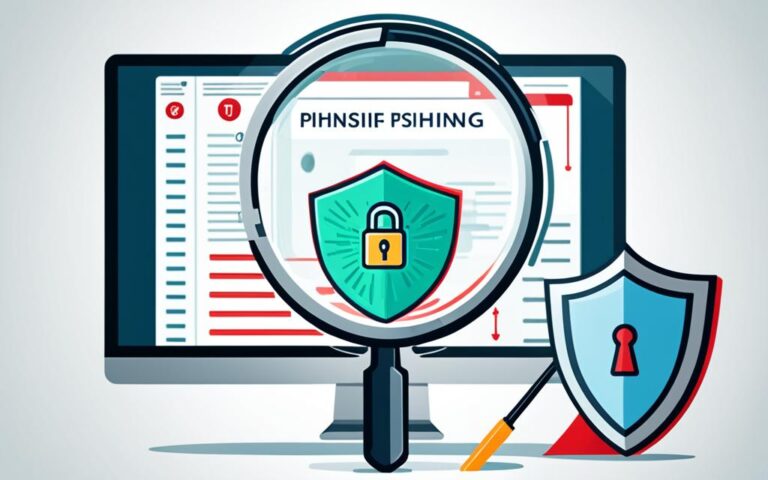Enhancing Phishing Protection Cleanup with AI Technologies
Artificial intelligence (AI) is revolutionizing cybersecurity defenses by both protecting organizations and empowering threat actors. In the realm of phishing attacks, AI-powered techniques have become increasingly sophisticated, surpassing the capabilities of traditional email filters. To combat these advanced threats, companies must adopt AI technologies, such as AI-powered email protection systems, to detect and mitigate phishing attacks effectively.
AI-phishing detection systems analyze email content and subject lines, providing a comprehensive analysis of suspicious interactions. By scanning inbound messages for signs of phishing attacks, such as brand spoofing and impersonation attempts, AI-powered systems enhance cybersecurity defenses against evolving AI-fueled phishing tactics.
For additional protection, companies can leverage machine learning algorithms to classify URLs in real-time, identifying potential threats before they reach employees’ inboxes. This proactive approach ensures that AI is used to fight AI, delivering robust cybersecurity solutions against phishing attacks.
However, while AI technologies are crucial, the human factor remains vital in phishing protection. Well-trained staff equipped with comprehensive cybersecurity education and phishing detection skills serve as a critical last line of defense. Encouraging employees to report suspected attacks directly from their email clients or web browsers enables proactive defense measures.
As AI-powered phishing attacks continue to evolve, companies investing in AI technologies for cybersecurity defenses are well-equipped to combat this ever-growing threat landscape. By integrating AI-powered email protection systems, fostering a culture of employee vigilance, and staying abreast of emerging phishing tactics, organizations can stay one step ahead, effectively deterring and mitigating the risks posed by sophisticated phishing attacks.
The Evolving Phishing Tactics
Phishing attacks have become more sophisticated with the use of AI. Threat operators can now use AI to create highly convincing phishing emails that are more professional and deceptive than ever before. AI not only helps in creating more convincing messages but also assists in constructing content that appears like actual human conversations, making it harder for email filters to detect these attacks. The evolving phishing tactics have made it increasingly challenging for individuals to identify phishing emails based on grammatical errors, vocabulary inadequacy, and poor page layouts.
The Rise of AI-Enabled Phishing Emails
With the advancements in AI, threat actors have discovered innovative ways to exploit the weaknesses of traditional email filters. By leveraging AI technology, they can create highly persuasive content designed to deceive unsuspecting recipients. These AI-enabled phishing emails are designed to mimic legitimate correspondence, making it difficult to distinguish them from genuine messages.
AI-powered algorithms allow threat operators to analyze the writing style, vocabulary, and tone of genuine human conversations and replicate them convincingly in their phishing emails. This level of sophistication makes it challenging for email filters to identify these messages as potential threats.
The Challenges for Email Filters
Email filters are crucial in detecting and blocking phishing emails, but AI-enabled content poses new challenges. Traditional filters rely on predefined rules and patterns to identify potential threats. However, AI-generated content can easily bypass these rules as it mimics human communication more effectively.
“The use of AI in phishing attacks has raised the bar in terms of sophistication. These emails are now more difficult to distinguish from legitimate correspondence, increasing the risk of falling victim to phishing scams.”
Phishing emails are carefully crafted to exploit human vulnerabilities and prompt immediate action. They often leverage psychological manipulation techniques, such as urgency or fear, to compel recipients to click on malicious links or disclose sensitive information. The evolving tactics used in phishing emails make it imperative for email filters to adapt and employ AI-powered solutions to stay ahead of the threat landscape.
Staying Vigilant and Educated
In the face of sophisticated phishing tactics, it is essential for individuals to remain vigilant and informed. Recognizing the signs of phishing emails, such as grammatical errors, vocabulary inadequacy, and inconsistent page layouts, can help individuals identify potential threats.
- Pay attention to email addresses and domain names, as phishers often use slight variations to mimic legitimate sources.
- Hover over links before clicking on them to verify the destination address and ensure it matches the stated URL.
- Be cautious of emails that create a sense of urgency or request sensitive information.
- Report suspected phishing emails to your IT department or email provider.
By maintaining an informed and educated approach, individuals can play an active role in mitigating the risks associated with the evolving tactics of phishing attacks.
Business Email Compromise Attacks
Business Email Compromise (BEC) attacks, a type of email-based scam, have witnessed a significant surge in recent years, thanks to advancements in AI. Threat operators are now more adept at impersonating influential individuals within organizations, including CEOs and employees from the IT or finance departments. This enables them to deceive employees into carrying out wire transfers or sharing sensitive information, posing a severe threat to businesses.
BEC attacks have become a major cause for concern, with an alarming 81% increase in attacks over the past two years. In 2022 alone, BEC attacks rose by a staggering 175%. The financial repercussions have been severe, with global losses totaling a staggering $43 billion between 2016 and 2021. In 2021 itself, threat operators successfully made $2.4 billion from BEC schemes, marking a significant increase compared to reported ransomware earnings.
This image showcases the seriousness and impact of BEC attacks, emphasizing the urgent need for robust protection measures against this growing threat.
Using AI to Fight AI
To combat AI-powered phishing attacks, companies can leverage the power of AI technologies themselves. By utilizing AI-powered machine learning algorithms, organizations can identify and respond to potential phishing attacks in real-time.
These advanced algorithms analyze email content and subject lines, detecting tones and precise wording that indicate suspicious interactions. This enables companies to proactively protect their systems and data from the ever-evolving tactics of AI-powered phishing attacks.
In addition to machine learning algorithms, AI-powered anti-phishing tools play a crucial role in detecting and preventing phishing attacks. These tools can scan inbound messages for signs of phishing, such as brand spoofing and impersonation attempts, ensuring maximum security against malicious actors.
Implementing real-time monitoring and anomaly detection procedures further enhances the detection and prevention of AI-powered phishing attacks. By continuously monitoring for unusual behaviors and identifying anomalies, organizations can stay one step ahead of potential threats.
Virtual sandboxing is another effective measure that can be employed. By isolating suspicious email attachments or links in a secure environment, organizations can safely analyze and evaluate their potential threats without exposing their systems to harm.
Real-Time Monitoring and Anomaly Detection
In the battle against AI-powered phishing attacks, real-time monitoring and anomaly detection are essential tools.
“Real-time monitoring allows organizations to stay ahead of potential threats by continuously observing and analyzing activities within their systems. Through real-time detection and response, companies can swiftly neutralize any threats that arise.”
Anomaly detection algorithms analyze patterns and behaviors to identify any deviations from normal activity. By flagging unusual actions or events, organizations can quickly investigate and respond to potential phishing attacks, preventing significant damage to their operations.
Utilizing AI-powered machine learning algorithms, organizations can significantly enhance their cybersecurity defenses against AI-powered phishing attacks. By combining these technologies with trained personnel and ongoing employee education, companies can create a robust security ecosystem that proactively identifies and mitigates threats.
The Human Factor
While AI technologies play a crucial role in detecting and preventing AI-powered phishing attacks, the human factor remains a critical line of defense. Despite advanced email protection systems, some maliciously crafted phishing emails may still bypass filters. In such cases, having a well-trained staff can help prevent incidents. By educating employees about phishing attacks and testing their detection skills using automated phishing simulators, companies can create a stronger last line of defense.
According to a study conducted by Cybersecurity Ventures, 95% of all cybersecurity breaches are caused by human error.
The Importance of Cybersecurity Education
Cybersecurity education is key to equipping employees with the necessary knowledge and skills to identify and combat phishing attacks effectively. By providing comprehensive training programs, companies can empower their workforce to recognize common phishing techniques, such as email spoofing, deceptive URLs, and social engineering tactics.
“Employees are the first and last line of defense when it comes to cybersecurity. Educating them about potential threats and providing ongoing training is crucial in maintaining a secure environment.” – James Thompson, Cybersecurity Expert
Training sessions can cover topics such as:
- Recognizing phishing emails and suspicious attachments
- Verifying the authenticity of emails from unknown senders
- Avoiding clicking on unfamiliar links
- Implementing strong password practices
Through continuous learning and reinforcement, employees can develop strong phishing detection skills that help safeguard company data and systems from potential breaches.
Encouraging Employee Reports
Creating a culture of reporting within the organization is essential for early detection and response to phishing attacks. Employees should be encouraged to report any suspicious emails they receive directly from their email client or web browser. This reporting mechanism allows cybersecurity teams to investigate and take immediate action against potential threats.
| Benefits of Employee Reports |
|---|
| 1. Early detection of phishing attacks |
| 2. Rapid response and mitigation |
| 3. Increased visibility into ongoing attacks |
| 4. Enhanced threat intelligence |
By leveraging employee reports, organizations can gain valuable insights into the tactics and targets of phishing attacks, allowing for proactive defense measures to be implemented.
Overall, while technology plays a vital role in phishing detection and prevention, well-trained staff with cybersecurity education and strong phishing detection skills are indispensable in fortifying an organization’s defense against AI-powered phishing attacks.
Conclusion
In today’s evolving cyber threat landscape, AI-powered phishing attacks pose a significant risk to organizations. To effectively combat this menace, companies must embrace AI technologies to bolster their phishing protection measures. By adopting AI-powered email protection systems and implementing employee education and reporting mechanisms, businesses can significantly reduce the vulnerabilities associated with phishing attacks.
It is paramount for organizations to proactively utilize AI as a defense against threat actors who leverage AI technologies for malicious purposes. By harnessing the power of AI, companies can strengthen their cybersecurity defenses and stay one step ahead of evolving phishing threats.
By staying vigilant and leveraging AI technologies, businesses can mitigate the risks posed by AI-powered phishing attacks. Implementing AI-powered email protection systems allows for accurate and efficient detection of suspicious interactions, while educating employees equips them with the necessary skills to identify and report phishing attempts. Through a combination of advanced AI technologies and human awareness, organizations can create a robust defense against phishing attacks.
In conclusion, the adoption of AI technologies is imperative for effective phishing protection, bolstering cybersecurity defenses, and mitigating threats. By incorporating AI-powered solutions and fostering a culture of cybersecurity awareness, businesses can safeguard their sensitive data, maintain customer trust, and proactively combat the ever-evolving landscape of phishing attacks.












